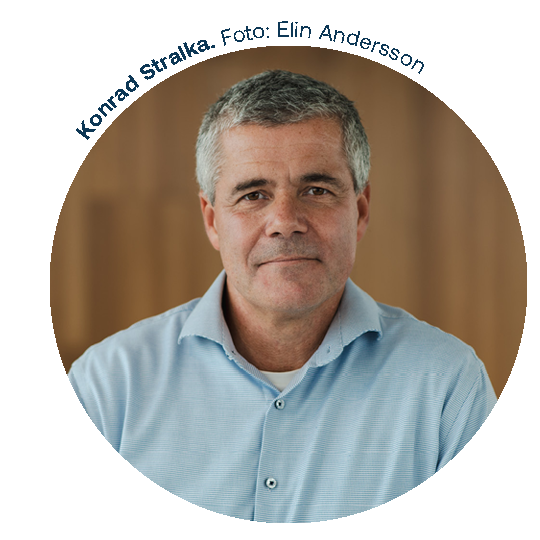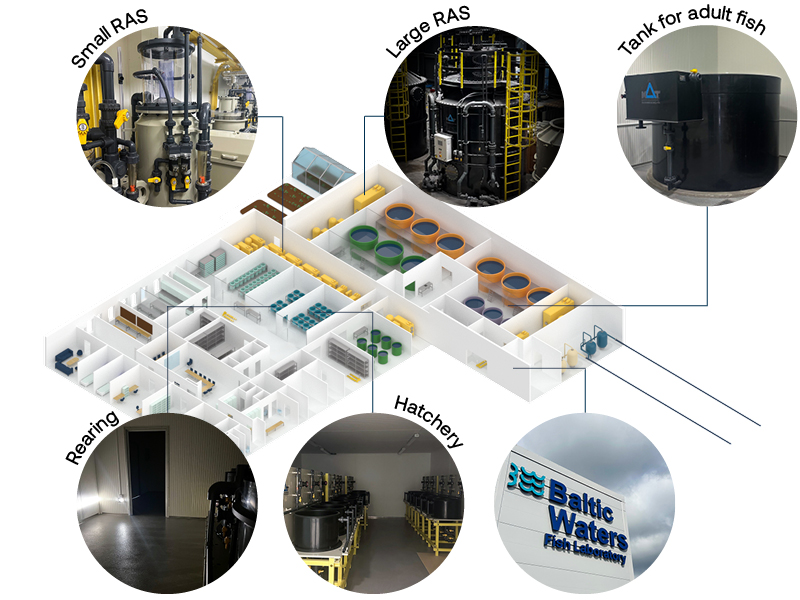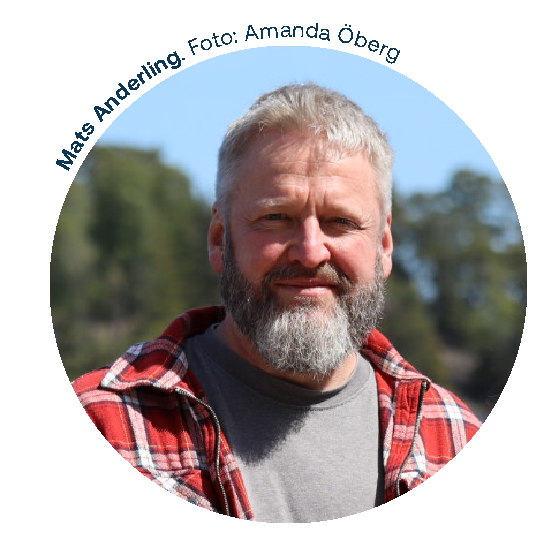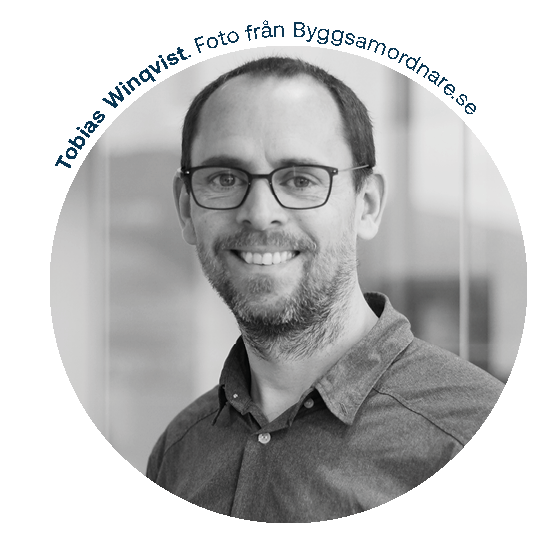The time has come – building inspection of BalticWaters Fish Laboratory. Electricians, HVAC technicians, and construction specialists are on site to ensure that the building meets the required standards. And it does. Although much feels complete, there is still one major, crucial step remaining before the laboratory can open its doors: water. It may sound simple, but creating an optimal water environment for all stages of fish’s life is anything but easy.
Almost all the equipment and technology are in place, but the large premises still echo. Workbenches and sinks will soon be installed in the laboratory section, while mezzanine floors will be built. The mezzanine floors are intermediate floors that make it possible to reach the tall RAS units, which extend from the floor to a height of around four meters. The same is being built for the tanks that will hold adult fish, so that laboratory technicians and researchers working on projects can feed and monitor the fish. Once all the technology is in place, the tanks can begin to be filled with water
RAS, or Recycling Aquatic Systems, purifies and recirculates the water in the tanks, hatcheries, and rearing tanks. The systems are the heart of the laboratory and crucial to the fish’s habitat. There are three large RAS units that circulate the water in the large tanks, while ten smaller RAS units circulate the water from the hatcheries and rearing tanks.
“The first step towards commissioning the laboratory is to bring in water and make sure that all the technology is working. The goal is to be able to control the properties of the water,” says Konrad Stralka, CEO of BalticWaters.
Controlling the water is no easy task. Water for the laboratory is taken from the nearby Tvären bay, purified of bacteria and contaminants, regulated so that the temperature, salt, and oxygen levels are optimal for the fish’s various life stages, and then circulated to the laboratory’s various RAS units. All that remains now is to install equipment for purifying the wash water from the RAS units, which will be returned to Tvären.
“Getting clean water at the right temperature and salinity, and a bacterial culture that the fish thrive in, requires knowledge, many adjustments, and patience, but that is also what will make the laboratory a unique research environment,” says Konrad

And there is still some way to go before that happens.
The building inspection is a two-stage process, with the majority of the laboratory’s construction components now having been inspected and approved. During the summer and early fall, work will continue with installing the process environment, i.e., all the equipment that controls and purifies the water.

In the parts of the laboratory where fish, larvae, and fry live, there will be subdued lighting to mimic their natural environment. To prevent staff and researchers from stumbling around in the dark, floor lighting has been installed that illuminates the floors but does not disturb the fish. Illustration: Louisa Juvall Molin
The office section will also be completed during the summer, as this part of the laboratory is currently empty. In addition to a room for the laboratory’s operations manager and operations technician, there will be conference rooms, project offices, changing rooms, a kitchen, a lounge, and a rest room. Although the operations office is not yet furnished, Mats Anderling, operations manager at BalticWaters’ laboratory, and his colleagues are not idle.
“I have many years of experience as a laboratory manager, but this laboratory, which will be working with fish research, is new to me. Over the coming months, my colleagues and I will be attending training courses on the technology used in the lab, as well as courses on keeping and taking care of fish,” says Mats.

And then we have the final inspection in the fall. Tobias Winqvist, project manager at Byggsamordnare, is leading the construction of the BalticWaters Fish Laboratory and has been involved since the planning stage. It is thanks to Tobias and his colleagues, technology supplier MAT-kuling, and construction contractors from Stockholm Byggkoncept that the laboratory is now nearing completion.
“This project has been particularly exciting because there is no direct reference laboratory to draw on; the BalticWaters Fish Laboratory is unique in its kind. This has meant challenging design work with a high level of focus throughout the process, and we have had many different players involved and fruitful collaborations. We are now looking forward to completing the final construction and process installations and to being able to test and commission the functions throughout the facility. It feels really great that we are almost there,” says Tobias.
In parallel with the construction, other important processes are underway to enable operations at the laboratory.

“We have just begun the process of applying for a number of different permits to operate the laboratory, which involves several different authorities. It is a demanding process, but an important one, as we want to ensure that the fish have the best possible environment and that the work at the laboratory is carried out safely and correctly,” concludes Konrad.
Even though summer and vacation are approaching, work at the BalticWaters Fish Laboratory continues unabated. We would like to express our warmest thanks to everyone who contributes to the laboratory, and we look forward to September when the laboratory will slowly but surely begin to start up!

About the fish research laboratory
Goal: The laboratory is a place that enables new knowledge about cold-water fish species in the Baltic Sea, such as cod, herring, and turbot, which in turn promotes biodiversity in the Baltic Sea.
Location: Studsvik Tech Park outside Nyköping
Capacity: The building will contain laboratories that can house fish at different stages of life. There will be a total of 12 tanks for adult fish. There will be hatcheries for fish species that lay eggs on a surface (e.g., herring) and hatcheries for fish species that lay eggs in the open water (e.g., cod). In total, there will be over 70 tanks for holding eggs, larvae, and fry.
Water system: All water in the tanks and hatcheries circulates in RAS.
Commissioning: Autumn 2025
Read more about BalticWaters Fish Laboratory here.

